OK, picking up where we left off last time, moving upstream out of the pool and into the run below the landing, I started finding darters. At first, it was a few Rainbows but then the Banded Darters (Etheostoma zonale) made an appearance.
A common and widespread species in the Ozarks, I had never seen one in breeding color before, so I was tickled. Next up was another Banded fish, but a sculpin instead of a darter.
Then it was Greenside Darter (E. blennioides,) of which I still don’t have a photo that I’m happy with,
and a Logperch (Percina caprodes.)
At the very upper end of the run, where the water was swiftest, I found the day’s primary darter target.
The Yoke Darter (E. juliae) is endemic to the upper White River basin, from the North Fork west. Apparently it likes very swift water, because the water was moving so fast I could barely hold my position. And the water was only about two feet deep. I saw two of the darters and they both stuck to the swift water and hugged the bottom, using the cobble for cover. Those squigglie looking things in the last photo are caddis fly larval cases.
All along I had been seeing Orconectes neglectus, the Ringed Crayfish. Currently, O. neglectus is split into two subspecies, the nominate O. n. neglectus from the Spring (Neosho) River in southwest Missouri, northwest Arkansas and eastern Oklahoma (with isolated populations in Kansas, Nebraska and Colorada) and O. n. chaenodactylus, the Gap-ringed Crayfish which is native only to the North Fork basin (and is, of course, what we are looking at here.) Populations occurring geographically between the two subspecies are considered intergrades. However, at least one study (Dillman, et al., 2007) proposed elevating each of the subspecies to full species status and considered there to be at least one other cryptic species within the “intergrade” populations.
Ironically, while O. n. chaenodactylus is endemic to a small range in the North Fork basin, it has unfortunately been introduced into the neighboring West Fork of the Spring River. It has become established there and is replacing the native Coldwater (O. eupunctus) and Hubbs’ (Cambarus hubbsi) crayfishes.
In case you’re wondering, the bass was not able to catch the crayfish, though not for lack of trying.
Part III and Rippee Conservation Area coming soon.
| References cited: |
|
Dillman, C.B., B.K. Wagner and R.M. Wood. 2007. Systematics of Species of Special Concern in the Genus Orconectes from the Ozark Highlands. State Wildlife Grant Project – Final Report. Arkansas Game and Fish Commission. |
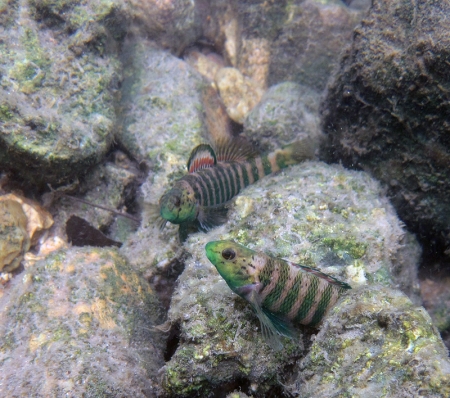
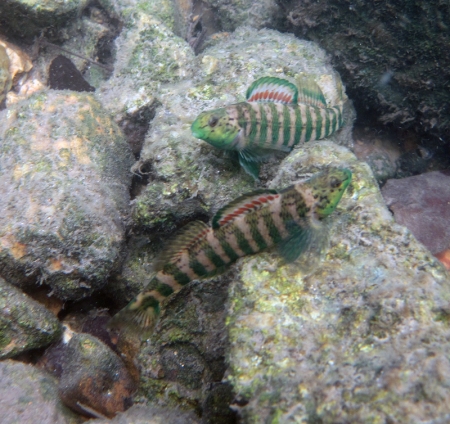
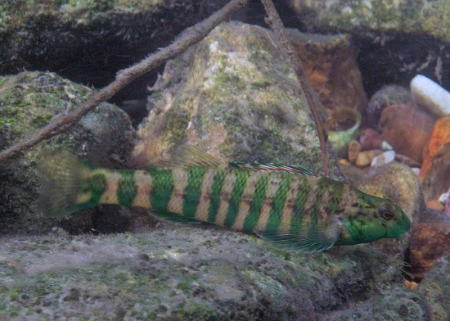
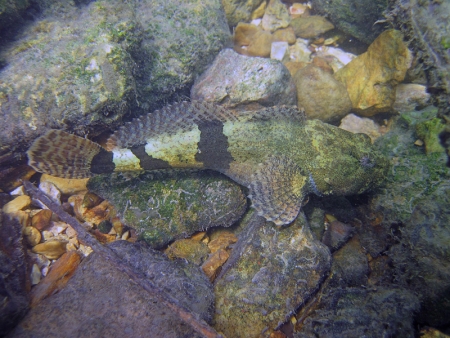
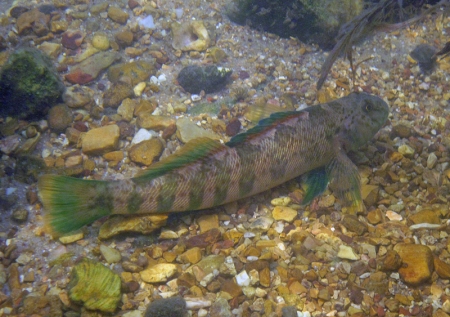
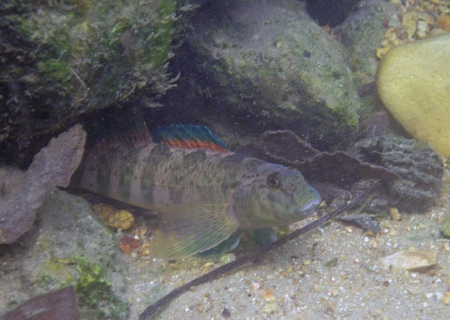
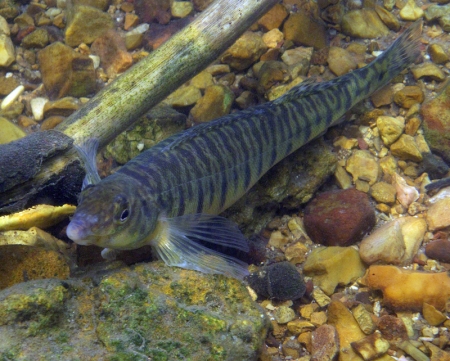
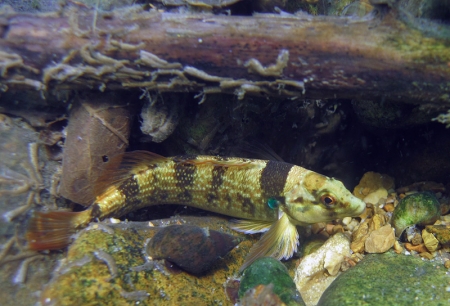
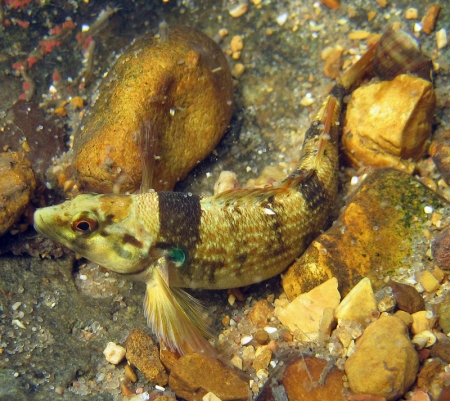
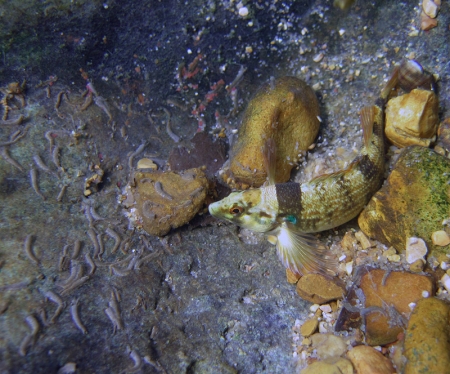
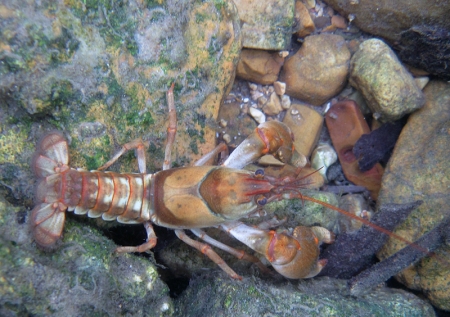
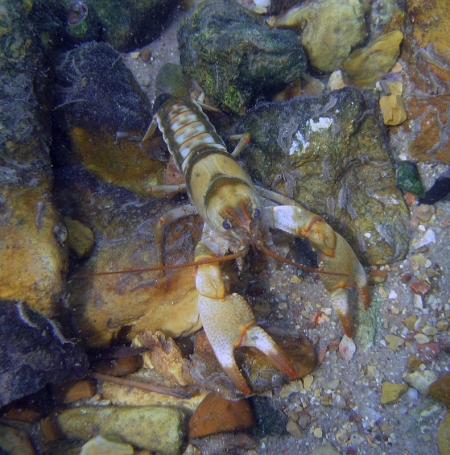
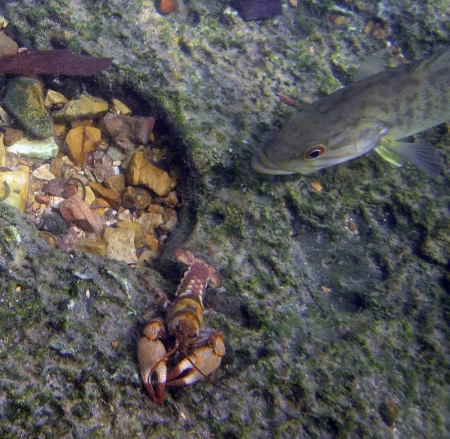
Very nice darter photos! The first couple are especially interesting with multiple fish present. Also the second banded darter photo is beautiful.
Thanks, Emily. For the kind words and for taking the time to go through the anti-spam gauntlet and leave comments. I do appreciate it.
Photographing fish is like herding cats and some (minnows, I’m looking at you) are nearly impossible subjects, but at least darters will occasionally sit still for a few seconds. I just shoot as many photos as I can and hope for a good shot from time to time.